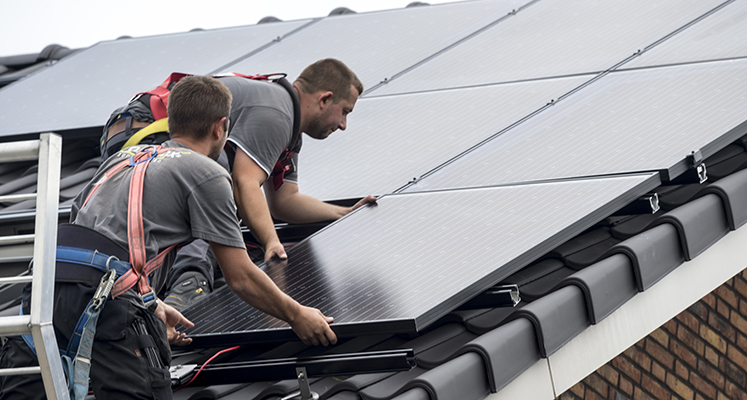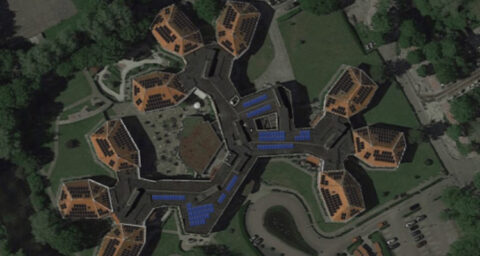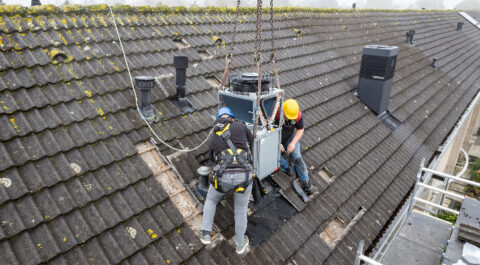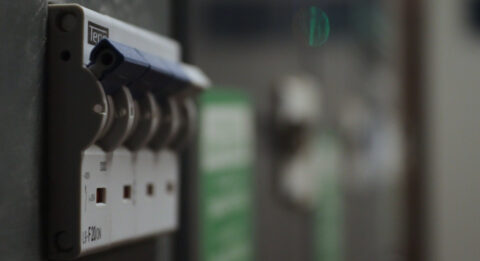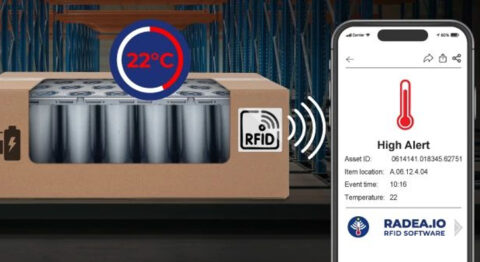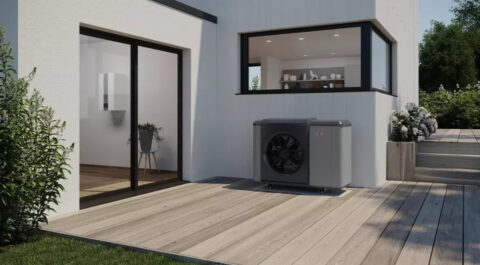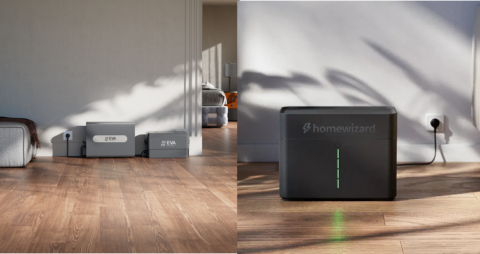Solar panels provide the most energy when fully bathed in sunlight. But what if a solar panel is partially shaded, or worse, one or more solar cells on the panel fail. How is this prevented from pulling down the output of the entire string?
A solar panel consists of a large number of solar cells neatly arranged in rows and columns. Think of a matrix of sixty cells divided into six columns (longitudinal) and ten rows (latitudinal). All of these solar cells are connected in series, so that together they form one large solar cell, so to speak. A long chain that zigzags across the surface of the panel.
Skipped
Complication in a series circuit is that the chain is only as strong as its weakest link. Suppose one of the sixty solar cells malfunctions or is covered by an autumn leaf. Then the chain is abruptly interrupted because the flow of energy through this cell is blocked. This would cause the entire panel to fail, and the fact that one cell can put an entire solar panel out of action is something we obviously don't want.
To prevent this, solar panels contain so-called bypass diodes. As soon as a solar cell threatens to spoil the fun, the current is rerouted through this diode, leaving the chain intact this time. The panel continues to work as normal, only producing less power. Now, not every solar cell contains such a bypass diode. It was chosen to apply them at the column level. A solar panel often has three bypass diodes, with each diode taking care of two of the six columns. This is also known as a substring.
Conservation of power
As soon as a cell fails somewhere or fails to deliver power due to shadowing, the corresponding diode will spring into action and skip (short-circuit) the entire substring consisting of those two columns. In this way, the solar cells in the remaining four columns (two substrings) can continue working undisturbed and the panel still delivers two-thirds of its total power.
The solar panel's amperage remains intact here, only the voltage goes down by about one-third. Indeed, in a series circuit, you add up the voltage of the individual cells, leaving it at two-thirds of the total in this example. It doesn't matter if one or more solar cells in the same substring fail, the two columns are still switched off completely.
String
If a cell in another substring also fails or is capped, that substring's diode will also go into action. As a result, as much as two-thirds of the total power is lost. If your customer is extremely unlucky because there are cells scattered throughout the entire panel refusing service, then all three bypass diodes will kick in and the entire solar panel will be shut down and thus skipped.
Not fun, but thanks to the bypass diodes, the string itself now keeps running as normal. Because because this one solar panel has turned itself off, the other panels can generate power unimpeded.
Shadow effect
The same thing happens once a solar panel becomes partially shaded. Less light on a group of solar cells means a bottle neck occurs. The current is cut off and the entire panel begins to supply this lower current. Again, the bypass diode of the respective substring(s) can intervene to prevent this while delivering as much power as is possible in this situation. The inverter of this string also affects this by the way.
To intervene or not to intervene
This does depend strongly on the moment when a bypass diode intervenes. Because if the entire panel continues to operate, the shaded solar cells will have a negative influence on the yield of this panel and often even on the entire (series connected) string if the current is equalized everywhere and thus goes down. If intervention does take place, then the current is no longer cut off and the sunny part (1/3 or 2/3) of this panel can still make a nice contribution, so the total yield can end up being higher.
